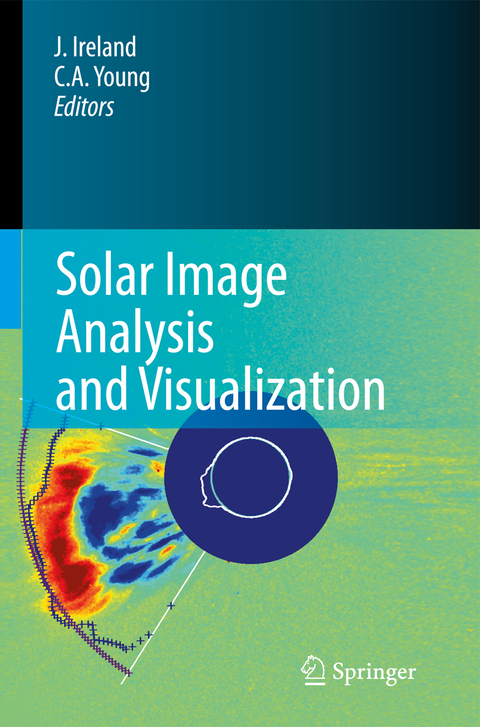Solar Image Analysis and Visualization
Springer-Verlag New York Inc.
978-0-387-98153-6 (ISBN)
The SECCHI A and B instrument suites (Howard et al. , 2006) onboard the two STEREO mission spacecraft (Kaiser, 2005) are each composed of: one Extreme Ultra-Violet Imager (EUVI), two white-light coronagraphs (COR1 and COR2), and two wide-angle heliospheric imagers (HI1 and HI2). Technical descriptions of EUVI, COR1 and the HIs can be found in Wuelser et al. (2004), Thompson et al. (2003), and De?se et al. (2003), respectively. The images produced by SECCHI represent a data visualization challenge: i) the images are 2048×2048 pixels (except for the HIs, which are usually binned onboard 2×2), thus the vast majority of computer displays are not able to display them at full frame and full r- olution, and ii) more importantly, the ?ve instruments of SECCHI A and B were designed to be able to track Coronal Mass Ejections from their onset (with EUVI) to their pro- gation in the heliosphere (with the HIs), which implies that a set of SECCHI images that covers the propagation of a CME from its initiation site to the Earth is composed of im- ?1 ages with very different spatial resolutions – from 1. 7 arcsecondspixel for EUVI to 2. 15 ?1 arcminutespixel for HI2, i. e. 75 times larger. A similar situation exists with the angular scales of the physical objects, since the size of a CME varies by orders of magnitude as it expands in the heliosphere.
Preface: A Topical Issue on Solar Image Analysis and Visualization.- FESTIVAL: A Multiscale Visualization Tool for Solar Imaging Data.- Visualization of Distributed Solar Data and Metadata with the Solar Weather Browser.- Widespread Occurrence of Trenching Patterns in the Granulation Field: Evidence for Roll Convection?.- Principal Components and Independent Component Analysis of Solar and Space Data.- Automatic Recognition and Characterisation of Supergranular Cells from Photospheric Velocity Fields.- Automated McIntosh-Based Classification of Sunspot Groups Using MDI Images.- Multifractal Properties of Evolving Active Regions.- Multiscale Analysis of Active Region Evolution.- A Comparison of Feature Classification Methods for Modeling Solar Irradiance Variation.- The Observed Long- and Short-Term Phase Relation between the Toroidal and Poloidal Magnetic Fields in Cycle 23.- Comparison of Five Numerical Codes for Automated Tracing of Coronal Loops.- Segmentation of Loops from Coronal EUV Images.- The Pixelised Wavelet Filtering Method to Study Waves and Oscillations in Time Sequences of Solar Atmospheric Images.- A Time-Evolving 3D Method Dedicated o the Reconstruction of Solar Plumes and Results Using Extreme Ultraviolet Data.- Automatic Detection and Classification of Coronal Holes and Filaments Based on EUV and Magnetogram Observations of the Solar Disk.- Spatial and Temporal Noise in Solar EUV Observations.- Multiscale Edge Detection in the Corona.- Automated Prediction of CMEs Using Machine Learning of CME?–?Flare Associations.- Automatic Detection and Tracking of Coronal Mass Ejections in Coronagraph Time Series.
| Erscheint lt. Verlag | 29.5.2009 |
|---|---|
| Zusatzinfo | IV, 289 p. |
| Verlagsort | New York, NY |
| Sprache | englisch |
| Maße | 155 x 235 mm |
| Themenwelt | Naturwissenschaften ► Physik / Astronomie ► Astronomie / Astrophysik |
| ISBN-10 | 0-387-98153-5 / 0387981535 |
| ISBN-13 | 978-0-387-98153-6 / 9780387981536 |
| Zustand | Neuware |
| Haben Sie eine Frage zum Produkt? |
aus dem Bereich




